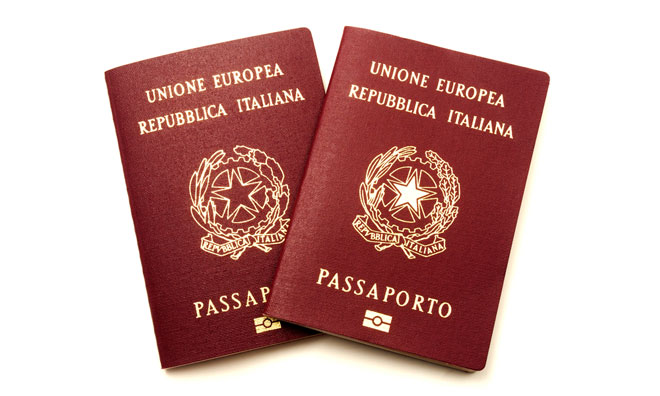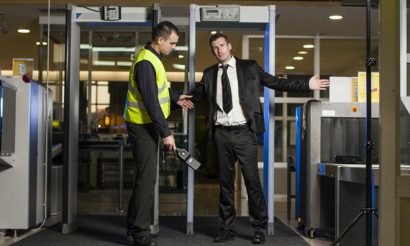Biometrics, security and IT solutions: A quickfire Q&A with Etienne van Zuijlen, SITA
- Like
- Digg
- Del
- Tumblr
- VKontakte
- Buffer
- Love This
- Odnoklassniki
- Meneame
- Blogger
- Amazon
- Yahoo Mail
- Gmail
- AOL
- Newsvine
- HackerNews
- Evernote
- MySpace
- Mail.ru
- Viadeo
- Line
- Comments
- Yummly
- SMS
- Viber
- Telegram
- Subscribe
- Skype
- Facebook Messenger
- Kakao
- LiveJournal
- Yammer
- Edgar
- Fintel
- Mix
- Instapaper
- Copy Link
Posted: 6 October 2016 | Roy Manuell, Digital Content Producer | No comments yet
We ask one of the speakers at Airport IT & Security 2016 Etienne van Zuijlen, SITA to talk us through IT, security, biometrics, ePassports and much more…


Following the success of Airport IT & Security 2016 last week, we asked one of the speakers Etienne van Zuijlen, Head of Business Development, Airport Operations, SITA to talk us through IT, security, biometrics, ePassports and much more…
What are the main issues facing airports and security at present? What can airports do to improve their security systems and policy?
Increasingly governments, airports and airlines are aligned in their focus: how can we achieve a new future where passengers can simply walk through the airport security and screening processes, border control and boarding gates without breaking their stride yet ensure that a country’s borders remain safe and secure.
Countries around the world face new and increased threats to their airports every day.
At the same time, there is an equally pressing challenge to speed up security checks to accommodate the growing number of passengers.
Above all, it is clear a wide range of stakeholders must come together if we are to achieve the extremely delicate balance between traveller convenience, simplicity and the need to securely check travellers’ identities to know who is passing through each point in the travel process and whether they might pose a threat. We continue to engage with governments, airlines and airports to chart the way forward and we are already seeing closer alignment in the US among the various stakeholders.
While SITA does not get involved in the security screening area itself, we do deliver the access control points and border eGates in many countries. We also play a significant role in developing the technology to make this new approach to identity management throughout the whole journey a reality. SITA is investigating several technologies – in particular those enabling single token travel – that will take us closer to a truly walk through experience.
Are security improvements and IT solutions inherently connected in the 21st Century, in your opinion?
There is no doubt that technology has made it easier to reliably check traveller identities over the past few years. For example, the widespread adoption of ePassports in particular has reduced the opportunity for identity fraud. Biometric data, including face and fingerprints, is digitally encoded within a chip embedded in the physical ePassport book enabling live biometric checks of the holder, ensuring the person carrying the passport is the owner.
Technology will continue to play a crucial role in keeping the aviation sector safe and secure.
SITA is working to take identity management to the next level by making single token travel a reality, where passengers ultimately use the same, secure identity at each step in the journey in any country and any airport.
Following steady progress over the past few years, the air transport industry is now on the cusp of being able to offer this simple, secure and safe walk-through experience mentioned above.
So you spoke at Airport IT and Security 2016 last week about “Single Token Travel at Smart Airports: becoming a reality now”. Could you tell us a bit more about this?
SITA is already leading the way forward with an important step towards single token travel at individual airports using ePassports through the development and deployment of Smart Path.
This combination of proven common use self-service and biometric technology allows passengers to move through the airport and board the aircraft simply by presenting themselves for a quick biometric check at the first step of their journey. Once verified there is no need for the passenger to present a boarding pass, a passport or travel documents again at the next stages of their journey through the airport.
A key advantage of the new technology is the ability to use and integrate with existing airport infrastructure – including industry standard common-use, self-service equipment as well as SITA’s e-Gates and Automated Border Control Gates (ABC) Gates – making rapid deployment easy and cost-effective. Already, more than 100 airports around the world have some sort of automated border control.
Key to the success is the expansion of ePassports with more than 50% of passengers already using these biometric-enabled passports which can be used to create a single travel token.
When you combine this ability to check a passenger’s identity with biometrics with the systems governments are using to do risk assessment of travellers based on airline-provided data, you have opportunity to automate the border crossing for passengers you know are low risk and whose identity you can check by comparing their live biometric to the one contained in their ePassport.


With SITA’s Smart Path, the passenger’s biometric details are captured through a facial scan at the first touch point in the journey. This can be at a SITA check-in kiosk or airline check-in desk, at bag-drop or the entry to the security area. The record is checked against the passenger’s travel documents, typically the ePassport and boarding pass, and a secure single token is created. Then, at each step of the journey – from check-in, bag drop, security access, border control to aircraft boarding – passengers gain access simply with a facial scan and without having to again show their passport or boarding pass.
Related topics
Biometrics, Passenger experience and seamless travel, Security


















